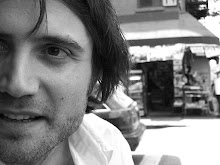Last week I took the final step in preparing the musical content of Words Project II for release on New Amsterdam Records later this year. Thanks to a recommendation from Eivind Opsvik, who not only plays bass and theremin (!) on the record but also mixed two tracks on it, I did it with Steven Berson, who runs an operation called Total Sonic Media, located in Greenpoint, Brooklyn. Unlike many mastering engineers, Steve likes to work with the client in attendance for the session, and offers a rate affordable enough to make the extra time it takes to explain what he's doing during the process part of the experience. As a musician himself, Steve brings a great set of ears and understanding to his work, as well as twenty years of mastering experience with many types of music.
I can't claim to be an audiophile by any stretch of the imagination... My general technophobia extends to the record world, and as soon as people start talking about microphones, preamps and plug-ins I am quickly lost. I've always known that mastering is important to the sound of any record but never understood much of what goes on in the process of it. As more and more music is purchased as single tracks, many aspects of mastering are becoming less important, and I've always been quite confused what direction to take when it has come to this stage in the process. (Mastering starts at about $500 typically and quickly goes into the thousands for many productions).
Mastering is always the last thing done to the music before a CD is printed, the final sheen put on most records before they come out. Besides putting the songs in the right order and spacing them accordingly, the most crucial and interesting work is done by manipulating frequencies, pannings, and adjusting the volume of the record so that it sounds even and unified. In other words, a CD that is mastered well keeps you from having to adjust the volume of it while you are listening to it. By adjusting frequencies, the mastering engineer finds the right balance of frequency that assures that the CD sounds clear regardless of the stereo system that it's played on. I had never realized how much the mix of the music can be manipulated by this frequency adjustment. By being given their own sonic space and processed with what's called a DeEsser, a tool that decreases sibilance (“ess” and “shh” sounds), many of the vocals on the record were made clearer and more direct. Some more basic tracks were widened sonically and some denser ones compacted (or compressed) to make them fit together and sound optimal. Without opening up any mixes, Steve was even able to lessen the reverb on one track that I wanted to sound more intimate than was achieved in the studio (the reverb was coming from the room, not a reverb unit). As it turns out, reverb tends to appear at a very particular frequency which was lessened to create the desired effect. Some subtle things were doctored, including a bit of uneveness in a solo soprano saxophone portion due to the microphone picking up parts of the instrument more directly than others.
What a great experience to sit there and watch all this happen... and a great feeling to know that what's done is done musically and I can now devote myself more to the other aspects of the record release.
Subscribe to:
Post Comments (Atom)





No comments:
Post a Comment